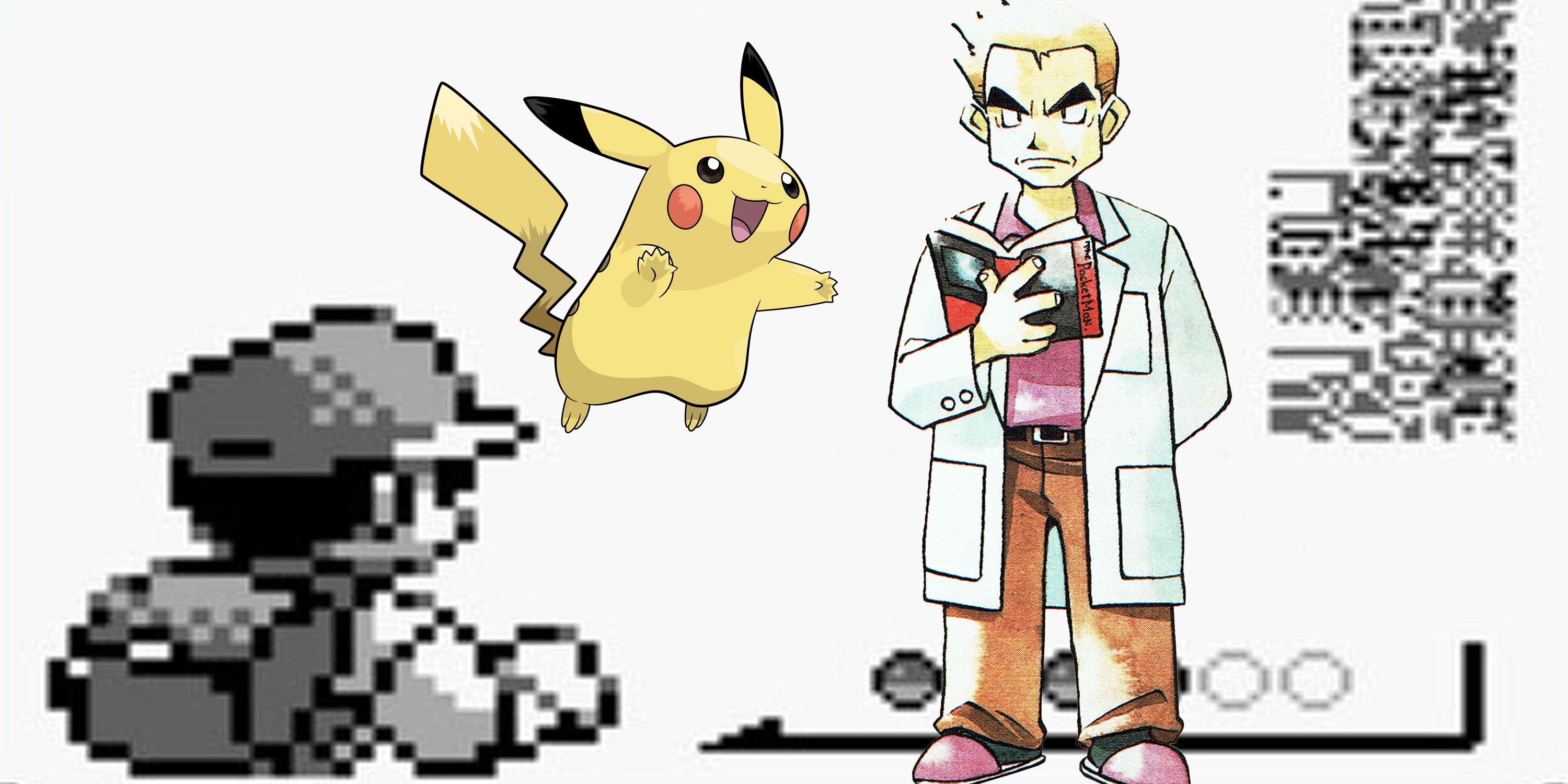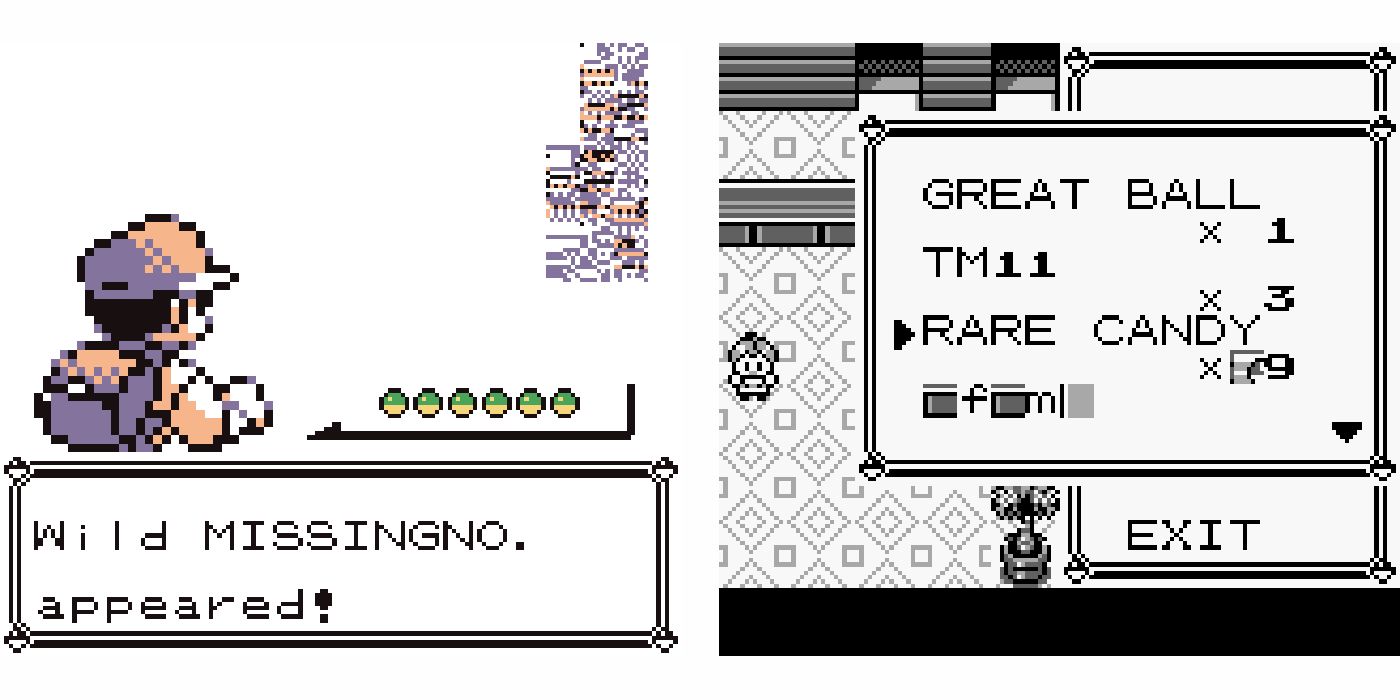What's the story behind the famous MissingNo. glitch in the original Pokémon games? So popular have Pokémon Red, Blue and Yellow become across the world, that many of the game's features and secrets have gone on to become urban legends. From the purported ways of catching Mew, to the creepypasta stories linking the Lavender Town theme music to real-life deaths, Pokémon's first generation has taken on a mythical status since first being released in 1996.
As might be expected from a sprawling RPG on an 8-bit handheld console, the early Pokémon releases do contain a number of bugs, errors and glitches, but arguably the most famous of these is the appearance of a strange wild Pokémon called MissingNo. Like most glitches, forcing MissingNo. to spawn can potentially cause damage to the player's game, but that hasn't stopped players seeking out this elusive Pokémon over the past two decades. Trainers determined to find MissingNo. for themselves proceed at their own peril.
The most common way of finding MissingNo. is to watch the Old Man's Pokémon-catching demonstration in Viridian City, fly to Cinnabar Island and surf along the eastern coastline. Performing these actions correctly will soon cause this unique Pokémon to appear. Visually, MissingNo. is little more than a tower of scrambled pixels in the shape of two adjacent rectangles, but the Pokémon can be caught, has a Normal/Flying type (in Red and Blue, at least) and can be taught moves by TM. The MissingNo. glitch can also be used to exploit other flaws in the game, like duplicating the sixth item in a player's inventory.
Nintendo have officially described the glitch as a "programming quirk" and while this is essentially true, there's plenty more to MissingNo.'s creation. The root of the MissingNo. error derives from the coding used to create the Old Man's Pokéball throwing tutorial. The game has to alter the player's usual name and avatar to that of the NPC, make a Weedle appear in the middle of Viridian City, and then reset the battle code back to normal. However, an error in the programming of Cinnabar's east coast prevents the battle programming from resetting properly and fails to specify which Pokémon should spawn in that area.
Consequently, players can also catch a number of rare Pokémon using this trick, but how does MissingNo. fit into the equation? In addition to the 150 creatures that can legitimately be caught in the original Pokémon games, the coding contains several empty slots, or "missing numbers" and Cinnabar's failure to reset the battle code and define which Pokémon should appear means that these hidden placeholder monsters start to appear. This explains the reason behind the MissingNo. name, and accounts for why there are slight variations in the creature's design.
In a further development to the MissingNo. myth, some fans have speculated that the glitches aren't merely empty slots, but Pokémon that were deleted from the game prior to release. This theory is supported by the fact that the different variations of MissingNo. have unique sound effects attached to them, and previous design leaks have revealed a number of early unused Pokémon that didn't make it into the finished game. In Pokémon Red and Blue, the monsters are internally indexed out of Pokédex order and the gaps in this registry could be instances where a creature was wiped from the code, with the Cinnabar island trick forcing the game to spawn all Pokémon, including these missing entries.
The causes, history and effects of MissingNo. in Pokémon's first generation present a complex area of interest with plenty of room for debate, but this is exactly why gamers have dedicated so much energy to hunting this particular glitch. MissingNo's unique properties, beneficial side effects and potential to corrupt your game have all added to the urban legend, particularly for Pokéfans that were introduced to the franchise via later, less glitchy, generations.
Sources: Brian Raddatz, Glitch Fandom


